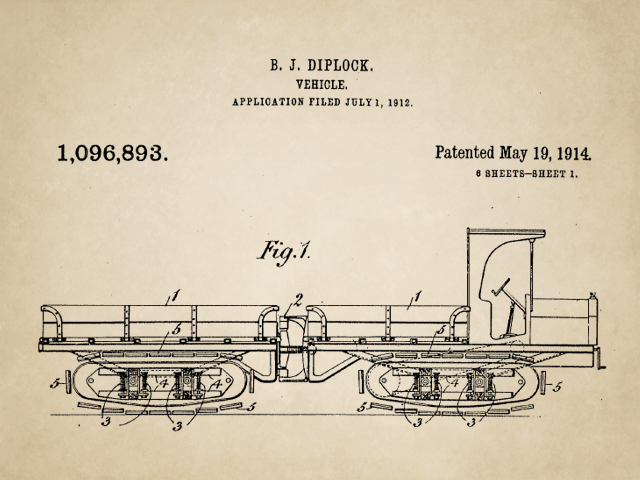Soviet all-terrain artillery caterpillars used in the 1950s are considered prototype versions of the Vityaz DT-10P and DT-30P vehicles. At that time, Soviet people started actively developing the country’s northern regions. A highly maneuverable vehicle capable of crossing difficult obstacles and carrying bulky loads was sorely needed in Siberia, the Far East and the Arctic.
“The intensification of this process can be explained by the military-strategic objectives of that period,” Konstantin Oskolkov, the general designer of the Vityaz vehicle family, writes in his book. According to Oskolkov, several war games, including Polar Bear, Polar Star and others, were conducted at that time, involving military units from the United States, Canada and other countries and using custom-made equipment especially adapted to the Extreme North environment. This equipment proved ineffective during the war games, owing to its poor reliability, low fuel-efficiency, unimpressive all-terrain capability and maneuverability. Soviet vehicles of that period also had the same drawbacks.

Where did the new mechanism have to operate? The term “off-road” usually denotes swamps, marshes, forests, snowdrifts, soil eroded by inclement weather and various other obstacles (ditches, moats, steep inclines, etc.)
The situation is aggravated by the fact that, unlike water and air, the physical properties of soil layers change quite often. The state of a single soil layer may change depending on humidity levels. Scientists have tried to assess the ability to traverse various soil layers using 11 parameters but were unsuccessful. Therefore they started subdividing soil layers, depending on their states, rather than types.
“Soils with a high plasticity level are among the most difficult environments for tracked all-terrain vehicles. Surfaces with these soils are mostly considered impassable for ground vehicles and therefore render them virtually useless,” Konstantin Oskolkov explains.
The Vityaz family of dual-section vehicles, the DT-10P, DT-20P and DT-30P, are an entirely new type of ATV capable of overcoming any soil layer.
Their commercial production began in 1982. Today, Vityaz is the only Russian company that manufactures unique amphibious two-section tracked transporters. Its all-terrain vehicles feature a freight capacity of 3-30 metric tons and can operate successfully off-road, traversing swamps, marshes and high snowdrifts. They operate in the freezing and extreme sub-zero temperatures of the Russian North, Siberia, the Arctic and the Antarctic, as well as the extremely high temperatures of sand deserts in Central Asia and the Arabian Peninsula, in extremely humid tropical regions and in the thin atmosphere of mountain plateaus. Their versatile design makes it possible to use them as basic platforms for weapons, cranes, loading-unloading equipment, dredges and other multipurpose equipment.
Zhukov Sergei
Karaulov Pavel
Kostomarova Yelena
Volkov Alexander
Yelena Kontuzova-Vantula
Yemtsev Konstantin
Shorokh Pavel
This project has been created using data from Uralvagonzavod Corporation
Photo: Uralvagonzavod; RIA Novosti (Yakov Ryumkin, Mikhail Ozersky, Vasily Shaposhnikov, Pyotr Malinovsky)
Freight capacity — 30 t
Engine power — 710 h.p.
Speed in water — 5 kph
Average specific ground pressure — 0.3 kg/cm²